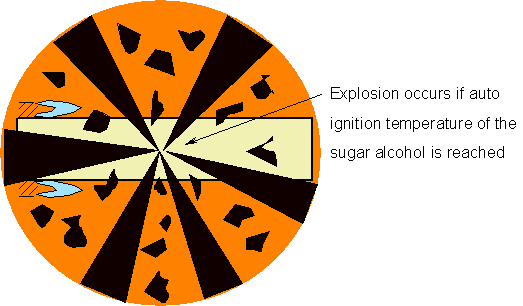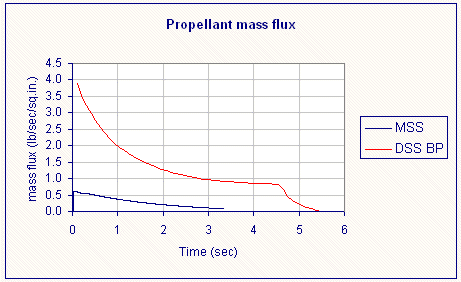Highlights of recent developments on the DoubleSShot project
The design is currently underway for a replacement static test motor. This motor, deemed DSS BPS (Boiler Plate Single-phase), will be essentially identical to the BP motor recently test fired. Except that it will be a single burn motor. This will allow us to test the design concept of the star grain, gather performance data, and to verify the behavior of the Delay Plug. The investigation into the BP anomaly has pointed to a breech of the Midbulkhead as a probably cause. Hot gases in the aft chamber pressure port channel (drilled into the Midbulkhead) likely caused a fracture of the Midbulkhead ablative liner, allowing the hot exhaust flow into the forward chamber, thereby igniting the grain (specifics of the likely cause of the anomaly will be detailed in a Test Report to be published in the future). The new motor will be fitted with the Midbulkhead at the forward end, with the Delay Plug cast into place. A "forward bulkhead" will be added to seal off the chamber forward of the Midbulkhead, fitted with a pressure sensor to detect any possible breech of the Midbulkhead seal.
Rick has completed his examination of the DSS BP motor's parts and has determined that the nozzle and Midbulkhead are in good condition and will be used for the new motor. The Midbulkhead ablative liner was found to be completely missing.View of Midbulkhead:
View of the interior wall of Midbulkhead:
(photos courtesy Rick Maschek)
Rick has completed measurements of the circumference of the "ballooned" forward casing. It is clear that the forward casing experienced particularly high pressures (>2000 psi) which severely strained the metal. The permanent strain was significantly more than the aft casing, as is seen in the following table and graph:
Randy Dormans has kindly agreed to drill the precision located nozzle and bulkhead attachment holes (75 total) in the motor casing. Randy reports that he has obtained a length of the 6" schedule 10 pipe for the motor casing and will start work on this task very soon. Randy had similarly procured and prepared both motor casings for the DSS BP motor.
Craig Peterson has kindly agreed to once again machine the custom modified cap screws for the nozzle and bulkhead attachments (75 plus spares).
Paul Avery has agreed to work on repairing or replacing the static test stand for the new motor. Paul has also taken on the task of developing a new, more powerful pyrogen unit for igniting the motor.
Alberto has updated the documentation page of the SS2S website with the four reports written by Markus Bindhammer on eutectic sugar propellant research.





























